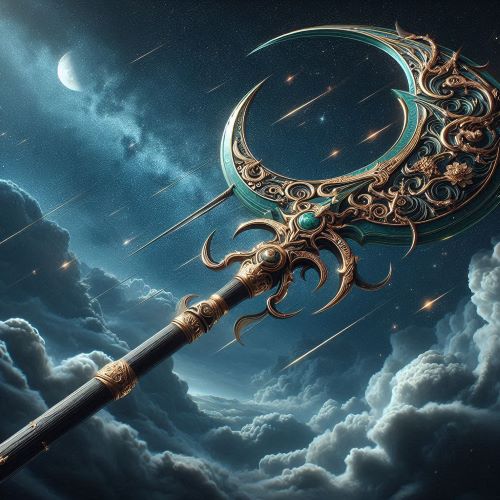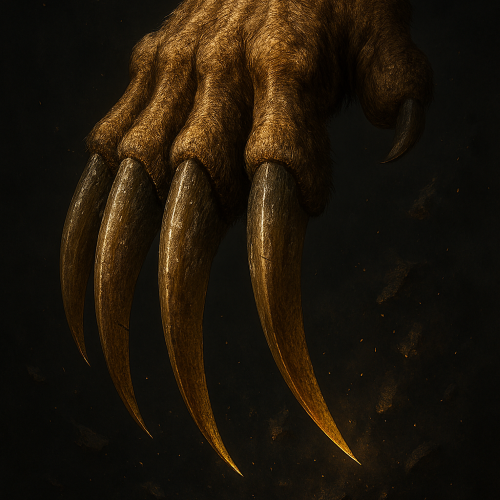Trishula : Weapon of Destruction
Trishula
Introduction
The Trishula, translating to “three spears” or “trident” in Sanskrit, is one of the most powerful and recognizable symbols in Indian mythology. Wielded most famously by Lord Shiva, it is not merely a weapon but a multidimensional emblem that encapsulates profound spiritual and philosophical concepts. Its presence in iconography, rituals, and mythology underscores its role as a force of destruction, regeneration, and cosmic harmony. The Trishula cuts through illusion and ignorance, reminding devotees of the interplay between life, death, and transcendence.
Origins
The mythological genesis of the Trishula reflects the convergence of celestial energy and divine craftsmanship. According to the Vishnu Purana, the god Vishwakarma, known as the celestial architect, forged the Trishula from the radiant energy of the sun god Surya. This act occurred when Surya’s intense brightness needed to be toned down for his consort Sanjana to coexist with him. The residual power from this event was molded into divine weapons, among them the Trishula for Shiva. This transformation of solar energy into a symbol of destruction signifies the channeling of raw power into purposeful divine will.
Another origin story, found in the Shiva Purana, presents the Trishula as a manifestation of Lord Shiva himself. As the self-created deity, Shiva needed no external tool to generate the weapon—it emanated from his being, embodying his capacity for annihilation, protection, and renewal. Such narratives place the Trishula beyond earthly origins, highlighting its role as a cosmic instrument rather than a mere implement of war.
Think you know your myths and legends? Dive into the world of ancient stories and test your knowledge with our engaging quizzes on Mythlok!
Powers
At its core, the Trishula symbolizes the power to pierce through multiple layers of existence. The three prongs are typically interpreted as representations of three essential forces of the universe: creation, preservation, and destruction—functions personified by Brahma, Vishnu, and Shiva. This alignment reflects the cyclical nature of life in Hindu cosmology, where endings are but preludes to new beginnings.
On a metaphysical level, the Trishula is deeply connected with yogic and spiritual symbolism. In yogic traditions, the trident mirrors the alignment and awakening of the Ida, Pingala, and Sushumna nadis—energy channels that govern consciousness. Their balance leads to enlightenment, with the Trishula marking the victory of self-awareness over illusion.
Additionally, the three prongs signify time’s triadic nature: past, present, and future. When wielded by Shiva, the Trishula is a statement of his dominion over all temporal and existential states. It also symbolizes the conquest over ego, desire, and ignorance—the three knots that bind the soul to the cycle of rebirth.
Owners/Users
While Lord Shiva is the principal bearer of the Trishula, it features in the iconography of several other divine entities, reinforcing its universal appeal across Hindu traditions. Goddess Durga, in her warrior form, often brandishes a Trishula among her array of weapons. Her use of the trident emphasizes her role as the fierce protector of dharma and the slayer of adharma (unrighteousness).
Kali, another formidable aspect of the feminine divine, is frequently depicted with the Trishula. In her hands, it symbolizes the annihilation of the ego and the disintegration of material attachments. Her association with the weapon reinforces its role in spiritual liberation and transformation.
Even among human devotees, particularly ascetics and sadhus who follow Shiva, the Trishula has a symbolic presence. These spiritual renunciates often carry a miniature trident, representing their detachment from worldly life and their devotion to the divine principles Shiva embodies.
Instances used
Throughout Hindu mythology, the Trishula has been wielded in pivotal cosmic events, marking divine intervention in the world’s affairs. One of the most dramatic episodes involves Shiva’s encounter with his son Ganesha. In a tale of misunderstanding, Shiva decapitates the young boy—who blocks his path—using the Trishula. Though tragic, the act leads to Ganesha’s resurrection with an elephant’s head and his subsequent rise as the remover of obstacles.
Another significant instance appears in the tale of Tripurasura, a demon who constructed three virtually indestructible cities and terrorized the universe. Shiva destroyed the three cities with a single thrust of the Trishula, thereby earning the epithet Tripurantaka. This act highlights the Trishula’s ability to restore cosmic order by eliminating entrenched evil.
In the Devi Mahatmya, Goddess Durga uses the Trishula to slay the buffalo demon Mahishasura. This moment symbolizes the power of divine feminine energy wielding the trident to defeat the forces of chaos. The act stands as a metaphor for inner battles, with the Trishula becoming a weapon to overcome inner demons like fear, pride, and ignorance.
Even outside literal usage, the Trishula is omnipresent in temples, where it adorns the spires of Shiva shrines. Placing it atop a temple or at a sanctum’s entrance is believed to ward off evil and serve as a spiritual beacon guiding devotees toward transcendence.
Frequently Asked Questions
Lorem ipsum dolor sit amet, consectetur adipiscing?
Lorem ipsum dolor sit amet, consectetur adipiscing elit. Praesent convallis vestibulum justo, ac tincidunt nunc vehicula quis. Nullam id dolor quis orci malesuada feugiat. Curabitur aliquet libero at urna ullamcorper, ac ultricies nulla dapibus.
Lorem ipsum dolor sit amet, consectetur adipiscing?
Lorem ipsum dolor sit amet, consectetur adipiscing elit. Praesent convallis vestibulum justo, ac tincidunt nunc vehicula quis. Nullam id dolor quis orci malesuada feugiat. Curabitur aliquet libero at urna ullamcorper, ac ultricies nulla dapibus.
Lorem ipsum dolor sit amet, consectetur adipiscing?
Lorem ipsum dolor sit amet, consectetur adipiscing elit. Praesent convallis vestibulum justo, ac tincidunt nunc vehicula quis. Nullam id dolor quis orci malesuada feugiat. Curabitur aliquet libero at urna ullamcorper, ac ultricies nulla dapibus.
Lorem ipsum dolor sit amet, consectetur adipiscing?
Lorem ipsum dolor sit amet, consectetur adipiscing elit. Praesent convallis vestibulum justo, ac tincidunt nunc vehicula quis. Nullam id dolor quis orci malesuada feugiat. Curabitur aliquet libero at urna ullamcorper, ac ultricies nulla dapibus.
Lorem ipsum dolor sit amet, consectetur adipiscing?
Lorem ipsum dolor sit amet, consectetur adipiscing elit. Praesent convallis vestibulum justo, ac tincidunt nunc vehicula quis. Nullam id dolor quis orci malesuada feugiat. Curabitur aliquet libero at urna ullamcorper, ac ultricies nulla dapibus.
Watch
Source
“Ardhanarishvara – Wikipedia”. (2002, October 7). Wikipedia. Retrieved from https://en.wikipedia.org/wiki/Ardhanarishvara
“Trishula – Wikipedia”. (2005, February 20). Wikipedia. Retrieved from https://en.wikipedia.org/wiki/Trishula
“Trishula | Hurricane chronicles Wiki – Fandom”. (2008, January 1). Hurricane Chronicles Wiki. Retrieved from https://hurricane-chronicles.fandom.com/wiki/Trishula
“Trishula – FFXI Wiki”. (2019, August 24). FFXI Wiki. Retrieved from https://www.bg-wiki.com/ffxi/Trishula
“Trishula, the Dragon of Icy Imprisonment | Yu-Gi-Oh! Wiki – Fandom”. (2025, June 9). Yu-Gi-Oh! Wiki. Retrieved from https://yugioh.fandom.com/wiki/Trishula,_the_Dragon_of_Icy_Imprisonment
“Trishul – Wikipedia”. (2007, March 1). Wikipedia. Retrieved from https://en.wikipedia.org/wiki/Trisul
“Trishul (missile) – Wikipedia”. (2004, March 27). Wikipedia. Retrieved from https://en.wikipedia.org/wiki/Trishul_(missile)








